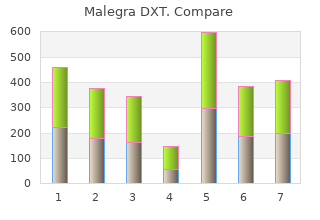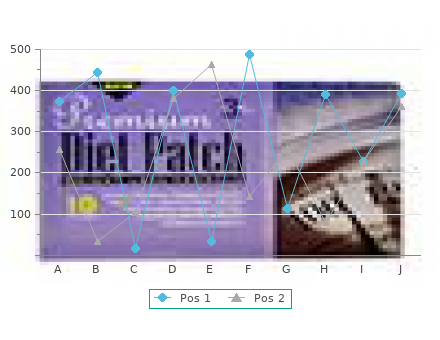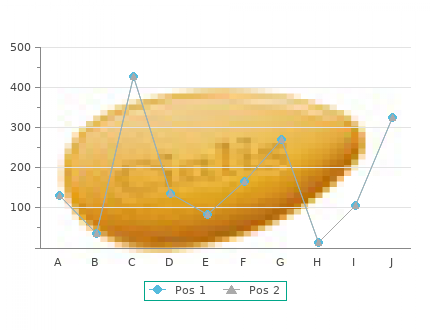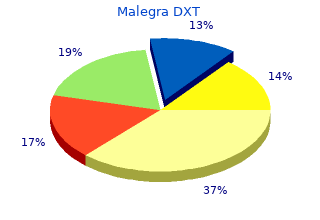Malegra DXT
2018, Silver Lake College, Khabir's review: "Malegra DXT 130 mg. Only $1,04 per pill. Purchase cheap Malegra DXT.".
Rarely discount 130mg malegra dxt free shipping impotence 40 years, this block is associated anatomic location or paresthesia or with a nerve stim- with complications such as pneumothorax order malegra dxt 130mg without prescription erectile dysfunction age, seizures ulator. When a nerve stimulator is used, continued (due to intra-arterial injection), and epidural/intrathe- twitches at a current of <0. SUPRACLAVICULAR AND UPPER EXTREMITY INFRACLAVICULAR BLOCKS The brachial plexus is composed of the nerve roots Performed at the level of the cords of the brachial C5 to T1, which combine to form the superior, mid- plexus, these blocks are excellent for surgeries distal dle, and inferior trunks. Utilization of a nerve stim- form the lateral, medial, and posterior cords, which ulator is preferred. Both blocks are associated with then give off the peripheral nerves of the upper the potential risk of pneumothorax, although it is extremity (Table 21–2). INTERSCALENE BLOCK Several approaches have been described to the supra- clavicular block. One approach is to locate the sub- The interscalene block is performed predominantly clavian artery at the level of the midclavicle by for shoulder surgery. Interscalene blocks generally do palpating or using ultrasound guidance. The needle is not provide adequate coverage of the arm due to only then directed parallel to the neck until motor response partially blocking the median nerve and essentially no distal to the wrist is consistently obtained. The interscalene groove, The popularity of the infraclavicular block has formed by the bodies of the anterior and middle sca- increased with the recent description of the lateral lene muscles, is palpated at the level of C6 or the coracoid approach. A needle is directed medially and medial and 2 cm caudal from the coracoid process caudally until localization is confirmed. Likewise, rhom- lary block because of better patient tolerance, decreased boid/trapezius movement demonstrates a needle tourniquet pain, lower incidence of incomplete block, directed too far posteriorly. These are expected with an AXILLARY BLOCK TABLE 21–2 Upper Extremity Nerve Distribution The axillary block is frequently performed for surger- ies distal to the elbow. Once the axillary artery is NERVE MOTOR SENSATION identified, several techniques can be performed to Musculocutaneous Arm flexion Lateral forearm locate the nerves: perivascular, transarterial, paresthe- Median Lateral deviation of Medial aspect of palm wrist and grip of including thumb and sia, or nerve stimulation. Pressure on the arm Ulnar Medial deviation of Medial forearm and distal to the injection site may be helpful in promot- wrist and grip of lateral aspect of hand 4th and 5th fingers including 4th and 5th ing proximal spread. From the midpoint of the first line a The neuroanatomy to the lower extremity is com- third line is drawn perpendicular and where this line posed of the lumbar and lumbosacral plexuses. Whereas it is common to provide leg supported at the ankle, the needle is inserted at a complete upper extremity anesthesia with a single 30°–45° angle 8 cm above the popliteal skin crease injection at the brachial plexus, regional anesthesia and 1 cm lateral to the midline. Because the sciatic approaches in the lower extremity often require two nerve may have split into its two components at this separate injections—one for each component of the level, some practitioners search for both the common lumbar and sacral plexuses (Table 21–3). An additional Blocks of the sciatic nerve have the slowest onset technique helpful in obese patients is to place the nee- times and the longest durations of the peripheral dle 2. The needle is then The sciatic nerve divides into the common peroneal directed 10°–15° from the vertical plane with the leg externally rotated. Once femur contact sensation to the lateral lower leg and dorsal aspect of is made the needle is grasped 2 cm above the skin. The degree of approach is adjusted until decubitus with operative leg up and bent at the knee appropriate stimulation is achieved. A line is drawn between the iliac crests with the patient in Sim’s position. Along this line, 5cm NERVE MOTOR SENSATION from midline, a needle is directed perpendicular to the Femoral Leg extension Anterior thigh and knee skin until quadriceps stimulation occurs, confirming Medial aspect of lower leg by saphenous correct placement. Lateral femoral None Lateral thigh The femoral nerve block is frequently performed and cutaneous well-tolerated for knee surgery. The nerve is located Obturator Adductors Medial thigh Tibial Plantar flexion and Heel and plantar aspect at the level of the inguinal crease lateral to the femoral inversion of foot of foot artery. By using increased volumes and distal pres- Common peroneal Dorsiflexion and Lateral lower leg and sure a “3–1” block may be achieved, but the obturator eversion of foot dorsal aspect of foot nerve is often not anesthetized. Central nervous system and cardiac effects from the insulated Tuohy needle introducer. There are also long-acting amide local anesthetic toxicity in the intact animal catheters with a metallic stylet that allow stimulation. New Drug delivery systems have been developed that are landmarks for the anterior approach to the sciatic nerve now allowing patients to go home with continuous block: Imaging and clinical study. Continuous plexus and peripheral nerve cantly affected if extended-duration long-acting local blocks for postoperative analgesia.


The minimum Benign fibrous histiocytoma requirement discount 130mg malegra dxt with visa erectile dysfunction treatment vacuum device, therefore generic 130 mg malegra dxt overnight delivery erectile dysfunction injections videos, is a marginal, or prefera- Very rare fibrohistiocytic tumor in the epiphyses and bly a wide en-bloc resection. Large tumors requiring diaphyses of long bones, although it can also occur in the corresponding defect bridging are usually involved ribs, the pelvis and the clavicle. Malignant change has not been de- involved, the diaphysis or metaphysis is also invariably scribed. The bone scan usually shows in- Intraosseous hemangiomas consist of accumulations of creased activity since this tumor grows faster than a differently structured (capillary/cavernous) blood vessels. They are very common in the spine, but extremely rare in ▬ Histologically the structure of the tumor is reminiscent the long bones. Hemangiomas in the spine invariably re- of a non-ossifying bone fibroma (NOF, see chapter on main asymptomatic, and they are almost always painless tumorlike lesions below) and indistinguishable from when they occur in the long bones. While neurofibromas in bone almost always occur in They can also be very variable in terms of size and connection with neurofibromatosis ( Chapter 4. They can occur sionally rather prominent and »epithelioid«, endothe- in the periosteum, where they lead to a lenticular exca- lium. Round, osteolytic foci can also be 4 Differential diagnosis: Diagnosing a hemangioma observed centrally. Schwannomas can cause persistent, solely on the basis of imaging investigations is very diffuse pain. The recurrence rate after difficult and usually requires a biopsy or resection. Given its variable appearance, most osteolytic pro- cesses (including metastases) must be included in the differential diagnosis. Large and/or symptomatic > Definition hemangiomas can be resected, although they can re- A locally aggressive tumor that occurs in the metaphysis cur if the resection is insufficient. Radiotherapy or in the area of the (former) epiphyseal plate and spreads embolization should be considered for very large pro- towards the epiphysis. In view of its aggressive nature and unpre- dictable course, the giant cell tumor is classified by the WHO as an »intermediate grade« tumor between benign and malignant tumors. Occurrence The tumor is relatively common in adulthood, usually occurring between the ages of 20 and 40. The tumor also occurs, in rare instances, during adolescence while the epiphyseal plates are still open. In the USA the giant cell tumor accounts for 5% of all bone tumors, compared to 20% in China. Conventional tomogram of a 19-year old female patient Site, pathogenesis with hemangioma in the area of the lateral tibial condyle The typical site of the tumor is epiphyseal or epiphyseal/ metaphyseal area. If the epiphyseal plates are still open, it usually remains limited to the metaphysis. By far the most commonly affected sites are the distal femur and the proximal tibia. Less frequently, the tumor occurs in the proximal femur, distal tibia, proximal humerus and distal radius. While it can form in a vertebral body, the most commonly affected site in the spine is the sa- crum. The tumor is predominantly located in bones with the most active growth plates. AP and lateral x-rays of the lumbar spine of a 17-year old Giant cell tumors are painful and can lead to swollen girl with a hemangioma in vertebral body L3. They show chondroblastoma is almost invariably confined to the epiphyseal / metaphyseal spread and are usually well epiphysis and possesses a sclerotic border, while the demarcated. An actual sclerotic border is normally ab- giant cell tumor is always located in the metaphysis as sent, as is a periosteal reaction. If a metaphyseal-epiphyseal location and more to the joint subchondrally and occasionally possess a aggressive radiological findings are present, the pos- bulging neocortex. Not infrequently, they penetrate sibility of an osteosarcoma must also be considered, al- the compact bone. During adulthood, the tumors though the latter additionally shows permeating bone can also spread to the diaphysis (Examples of gi- destruction, focal, cloudy areas of matrix calcification ant cell tumors can also be found in Chapter 3. The bone scan usually shows a mineralizations are absent, chondrosarcomas can be relatively pronounced uptake. The MRI signal of the confused with giant cell tumors in the advanced stage, tumor is low in all weighted images.

The first component begins prior to the initiation of treatment and involves a functional behavioral analysis to identify relevant overt pain and well behaviors purchase 130mg malegra dxt amex erectile dysfunction at 25, and purchase 130mg malegra dxt visa erectile dysfunction doctors northern virginia, as far as possible, antecedent stimuli and contingent consequences contributing to pain be- havior. At this stage, patients are frequently encouraged to monitor and re- 10. PSYCHOLOGICAL INTERVENTIONS AND CHRONIC PAIN 273 cord their behavior (e. Thereaf- ter, operant treatment is described as involving several ingredients includ- ing: (a) response prevention for escape/avoidance behaviors; (b) positive and negative reinforcement (e. The psychologist, however, may play an important role in monitoring these needs. According to Fordyce (1973), medications are at first provided to pa- tients on a prescribed-as-needed (PRN) basis for 2 to 4 days to establish the medication baseline. Baseline doses are then delivered on a fixed time schedule such that if patients had previously requested medication every 5 hours, medication would be delivered instead every 4 hours. With this method, medication is not contingent on soreness and therefore does not serve as positive reinforcer for pain or pain behavior; gradually over time medication is ultimately withdrawn. The role of the psychologist in time- contingent medication is to assist with monitoring of medication prior to adjustment and then with positive reinforcement and encouragement of ad- herence to the regimen. The operant methods are applied to each overt pain and well behavior across as many different conditions as possible, and when possible the pa- tient and family are encouraged to directly apply operant conditioning methods to behavior change (Sanders, 1996). Unique to operant condition- ing, the operant treatment principles are applied by all health care provid- ers involved in care, not exclusively the psychologist (van Tulder et al. Evidence The earliest evidence in support of operant conditioning for chronic pain came, not surprisingly, from Fordyce and colleagues in the form of a case study (Fordyce, Fowler, Lehmann, & DeLateur, 1968). In their study, pain medications were provided on a time-contingent rather than PRN basis in or- der to decrease the association of pain behavior and relief. Furthermore, nursing staff withheld social reinforcement when patients displayed pain be- 274 HADJISTAVROPOULOS AND WILLIAMS haviors, and provided extensive praise when patients showed well behav- iors. Positive treatment effects were observed following the inpatient pro- gram and at 22-month follow-up, including report of increased activity level and exercise tolerance, and decreased medication usage and pain ratings. Since the time of these earliest observations, several studies have been conducted along with reviews of operant therapy that have generally been encouraging (e. In an effort to improve the practice of psychotherapy, a number of task forces have reviewed the research literature and identified empirically sup- ported treatments. Chambless and Ollendick (2001) summarized the work of these task forces and reported that operant behavior therapy for hetero- geneous chronic pain patients has category II support, meaning that there is at least one RCT supporting the treatment, showing it as superior to a control condition or an alternative treatment. Our review of this area of research generally reveals that there are few research studies that address operant conditioning directly, and those that are carried out do not often follow the prototypical approach advocated by Fordyce (1976). Although there are a number of studies that address cogni- tive-behavioral treatment, or behavioral treatment that also includes relax- ation training, randomized control studies focused exclusively on operant conditioning are rare. Furthermore, because the operant approach involves numerous components it is difficult to clarify the extent to which psycho- logical intervention is crucial versus other components such as occupa- tional therapy and physiotherapy (Turk & Flor, 1984). Commentary The lack of studies addressing operant conditioning alone is perhaps a re- flection of our own direct experiences that, in practice, in clinical settings the prototypical operant approach is rarely used. Although this observa- tion is not made explicitly in the literature, systematic attempts at assess- ment of well behaviors and illness behaviors as well as contingencies be- tween overt pain behaviors and positive and negative reinforcers are infrequent in practice. Instead, clinicians routinely assume that certain pain behaviors are positive (e. Furthermore, it is often assumed that certain contingencies are always negative (e. Evidence is emerging that even some of the appar- ently simple relationships that were previously observed between pain be- havior and spouse solicitous behavior and facilitative behavior (Romano et al. Romano and colleagues (1995) reported, for instance, that spouse so- 10. PSYCHOLOGICAL INTERVENTIONS AND CHRONIC PAIN 275 licitous responses are predictive of pain behavior only among patients with high levels of pain and low mood. With respect to treatment protocol, in practice, we also expect that ethi- cal considerations largely prevent extensive use of response prevention for escape/avoidance behaviors. It is a mistaken belief that operant conditioning methods can be used to modify the behavior of the most resistant patients without their co- operation (Keefe & Bradley, 1984). Furthermore, although positive and neg- ative reinforcement may be used to increase supposed well behaviors and decrease pain behaviors, we question the degree to which this is employed as systematically as recommended by Fordyce (1976).

| Comparative prices of Malegra DXT | | # | Retailer | Average price | | 1 | A&P | 299 | | 2 | Subway | 751 | | 3 | DineEquity | 394 | | 4 | OfficeMax | 134 | | 5 | The Home Depot | 657 | | 6 | Walgreen | 867 | | 7 | Michaels Stores | 590 | | 8 | Best Buy | 814 | | 9 | H-E-B | 287 |
Malegra DXT
9 of 10 - Review by O. Karmok
Votes: 217 votes
Total customer reviews: 217 |



